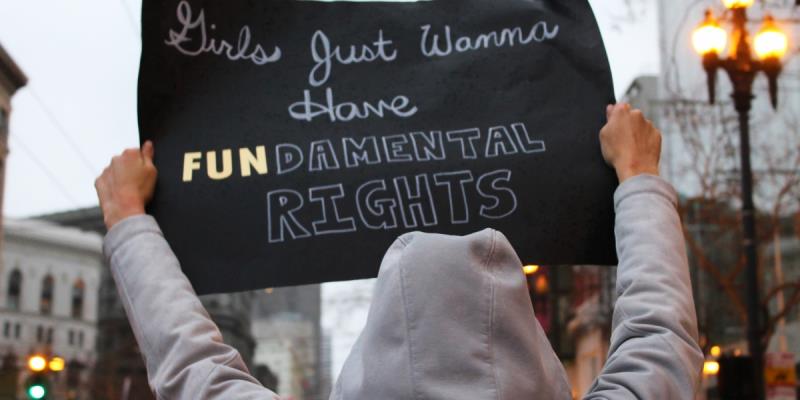How women got the right to vote in New Zealand
Published on Wed Sep 19 2018 in Community
Kiwis have long been trendsetters, but our proudest first just may be our trailblazing approach to voting. On 19 September 1893, New Zealand became the first self-governing country to grant all women the right to vote in parliamentary elections. The signing of the new Electoral Law changed world history forever, with many nations following in our footsteps in the years and decades that followed.
How it all began
The idea of women voting was unimaginable to much of world in New Zealand’s early colonial days. Women were not allowed to participate in politics, nor did many want to. It was believed that women were better suited for domestic jobs, and only men could handle the strain of government.
This began to change in the late 19th century, when women in Europe and the United States started pushing back against this rigid worldview. As women gained new opportunities through education, they set their sights on gaining important legal and political rights.
Suffragists in New Zealand
Despite our distance from the rest of the world, the ideas of prominent leaders in the women’s rights movement soon caught the attention of Kiwi women and men. Local suffragists soon put a New Zealand spin on these arguments.
In 1869, pioneer suffragist Mary Ann Müller wrote the first pamphlet on women’s suffrage in New Zealand. In An appeal to the men of New Zealand, she argued that property and voting laws that discriminated against women held the entire nation back. All of Müller’s work was published under the pen name Fémmina to hide her views from her anti-suffrage husband.
Whilst Müller worked in secret, other Kiwi suffragists were able to take more public roles. Kate Sheppard travelled the country to gain support for women voting. In 1893, she helped organise a petition bearing the signatures of almost 32,000 women that was presented to Parliament. This 270 metre document was dramatically unrolled across the chamber of the House.
That same year, Meri Te Tai Mangakahia was asked to address the Kotahitanga parliament to explain her motion to grant Māori women the right to vote. She argued that since many Māori women owned their own lands, they should be allowed to vote the same as men. Meri also requested that Māori women be eligible to run for public office, an idea the European suffrage movement had not yet embraced.
Victory!
Securing the right to vote for women had many false starts. Bills were introduced in Parliament as early as 1887, but none made it over the line. Early politicians who supported women’s suffrage included Julius Vogel, John Ballance and John Hall.
Finally, a new Electoral Bill was passed through the Lower House in 1893 by a large majority. This bill granted both Māori and Pākehā women the right to vote, which also enjoyed popular support. Though those opposed to women’s suffrage hoped this bill would be defeated in Upper House (including Premier Richard Seddon), it was passed on 8 September 1893.
Just 11 days later Lord Glasgow, the new governor, signed the bill into law. Suffragists celebrated, but their work wasn’t done yet. They set out to register as many women as possible before the November elections. Some 70 per cent of women who were eligible to vote cast a ballot that year!
Voting around the world
This victory for Kiwi women gave hope to their supporters around the globe. In the years that followed, other countries began granting women the right to vote:
- Australia – 1894-1902
- Canada – 1917-1960
- United Kingdom – 1918-1928
- United States – 1920
- South Africa – 1930-1994
- India – 1947
- China – 1949
- Tonga – 1960
- Samoa – 1990
Even today the fight for voting rights continues. Women and men are still barred from casting ballots in many countries.
New Zealand today
The notion that women couldn’t vote may now seem strange. Kiwi women are often elected to Parliament, have been appointed to the Legislative Council, and three have served as Prime Minister. Next time you enter the voting booth, take a moment to reflect on the courageous Kiwis who fought hard to help make this happen!
Curious about another New Zealand first? Learn how Labour Day became a Kiwi tradition.
About Author: Momentum Life is a leading provider of Life insurance and Funeral insurance in New Zealand.
Sources:
NZ History, Kate Sheppard, Women and the vote
Te Ara: The Encyclopedia of New Zealand, Mary Anne Müller, Meri Te Tai Mangakahia
The content provided in this article is for information purposes only. The information is of a general nature and does not constitute financial advice or other professional advice. To the extent that any of the content constitutes financial advice, it is limited to Momentum Life products only and does not consider your specific financial needs or goals. You should consider whether the information is appropriate for you and seek independent professional advice, if required.
All product information is correct at the time this article was published. For current product information, please visit the Momentum Life website.
